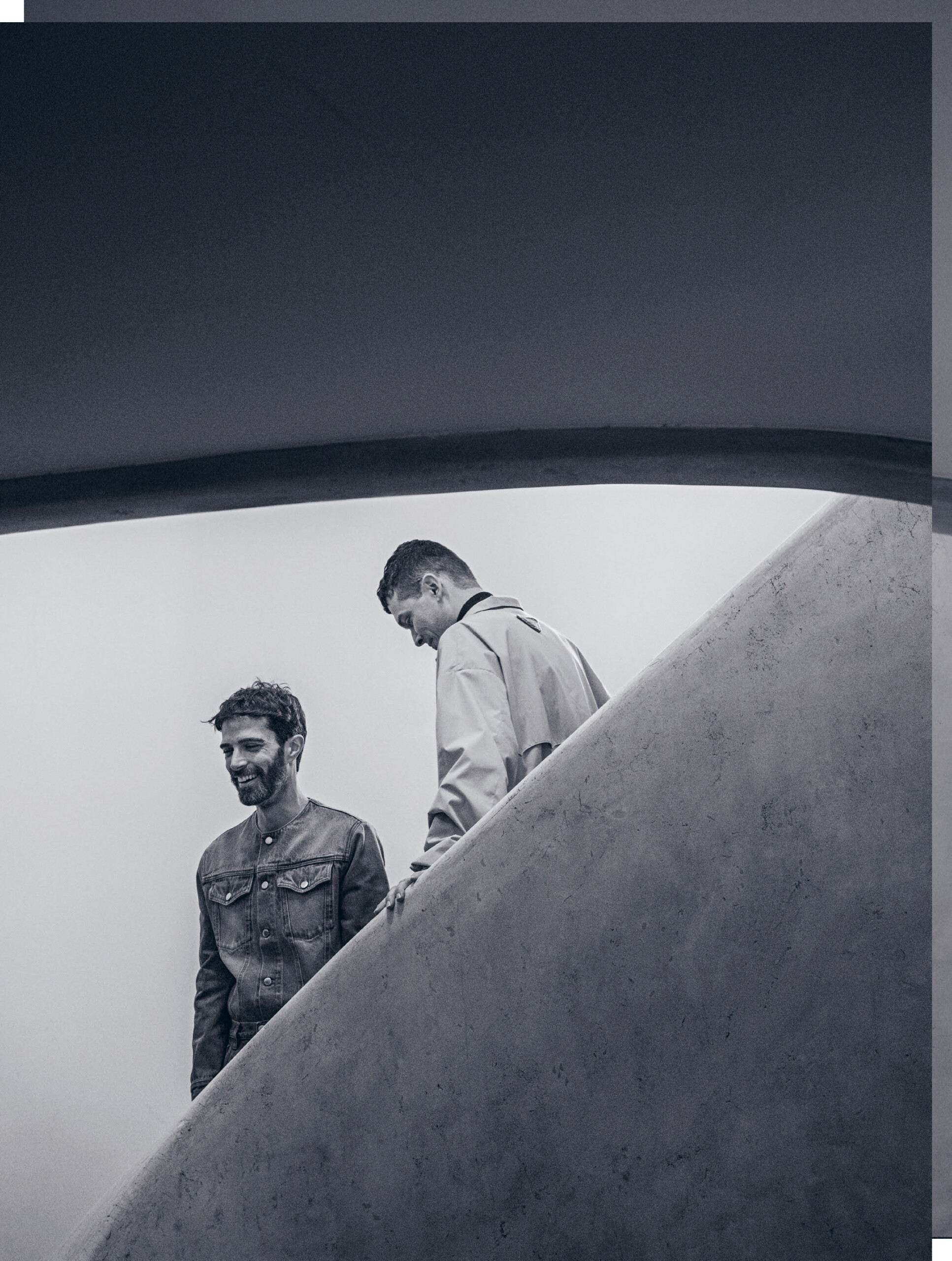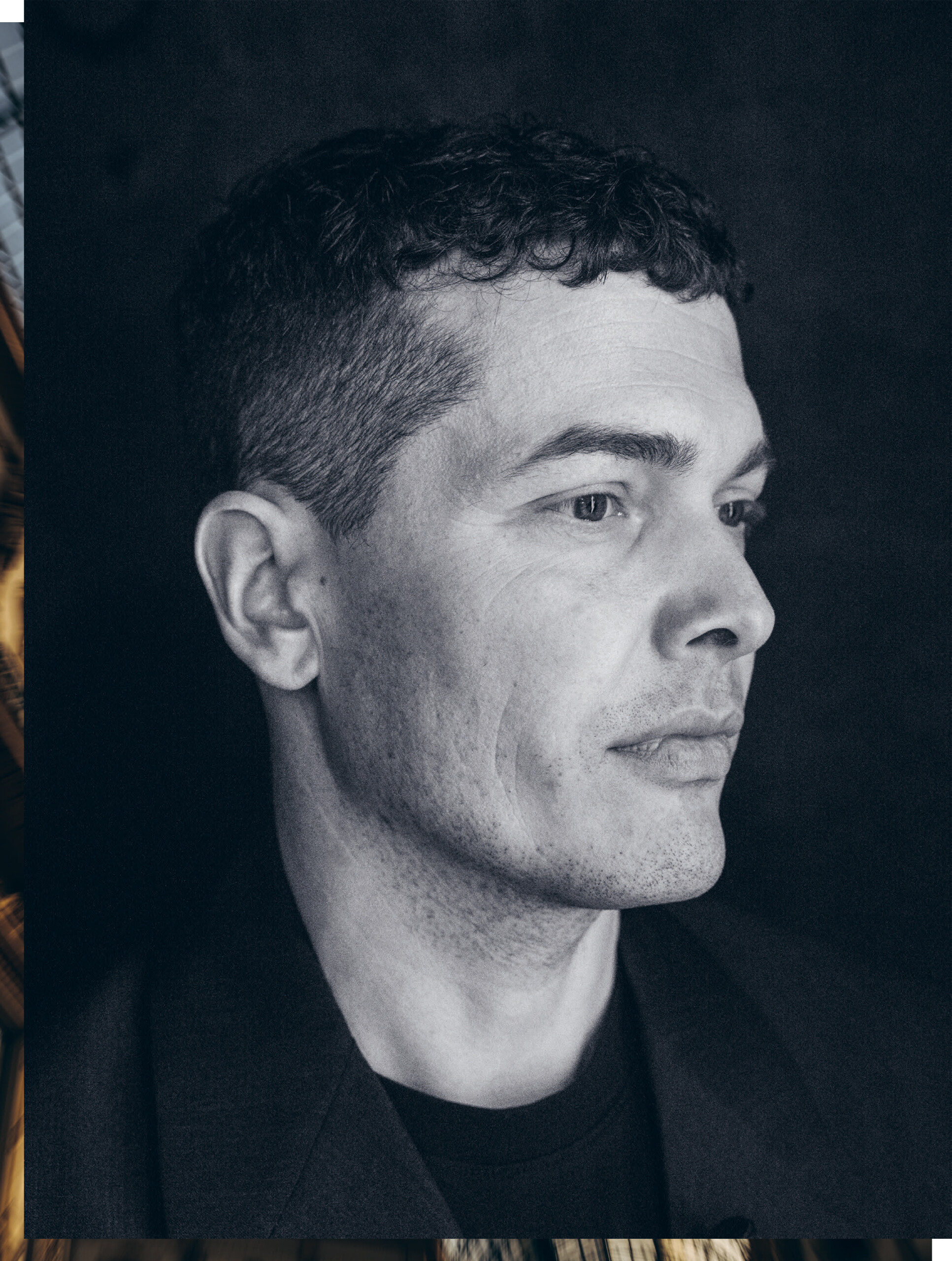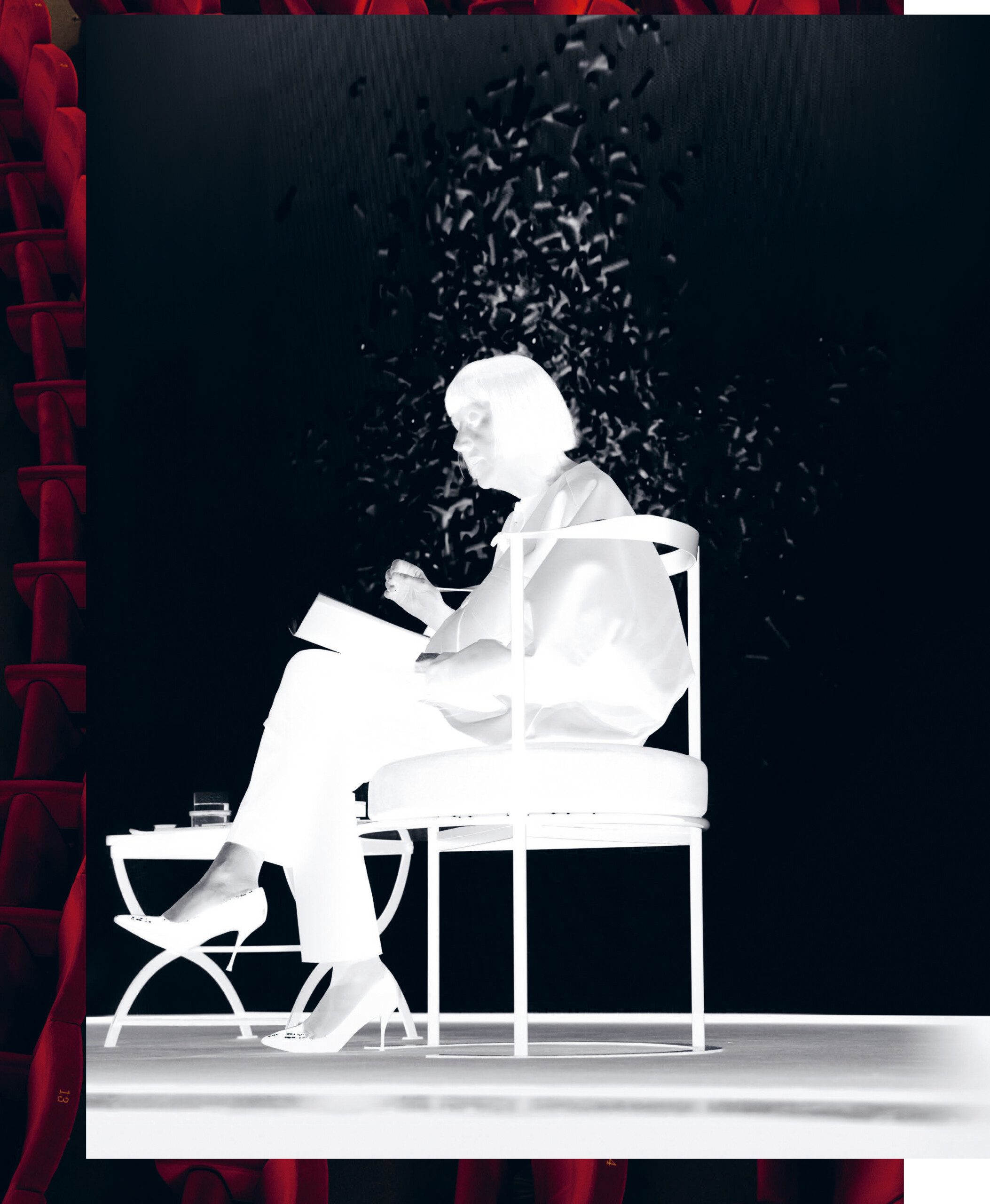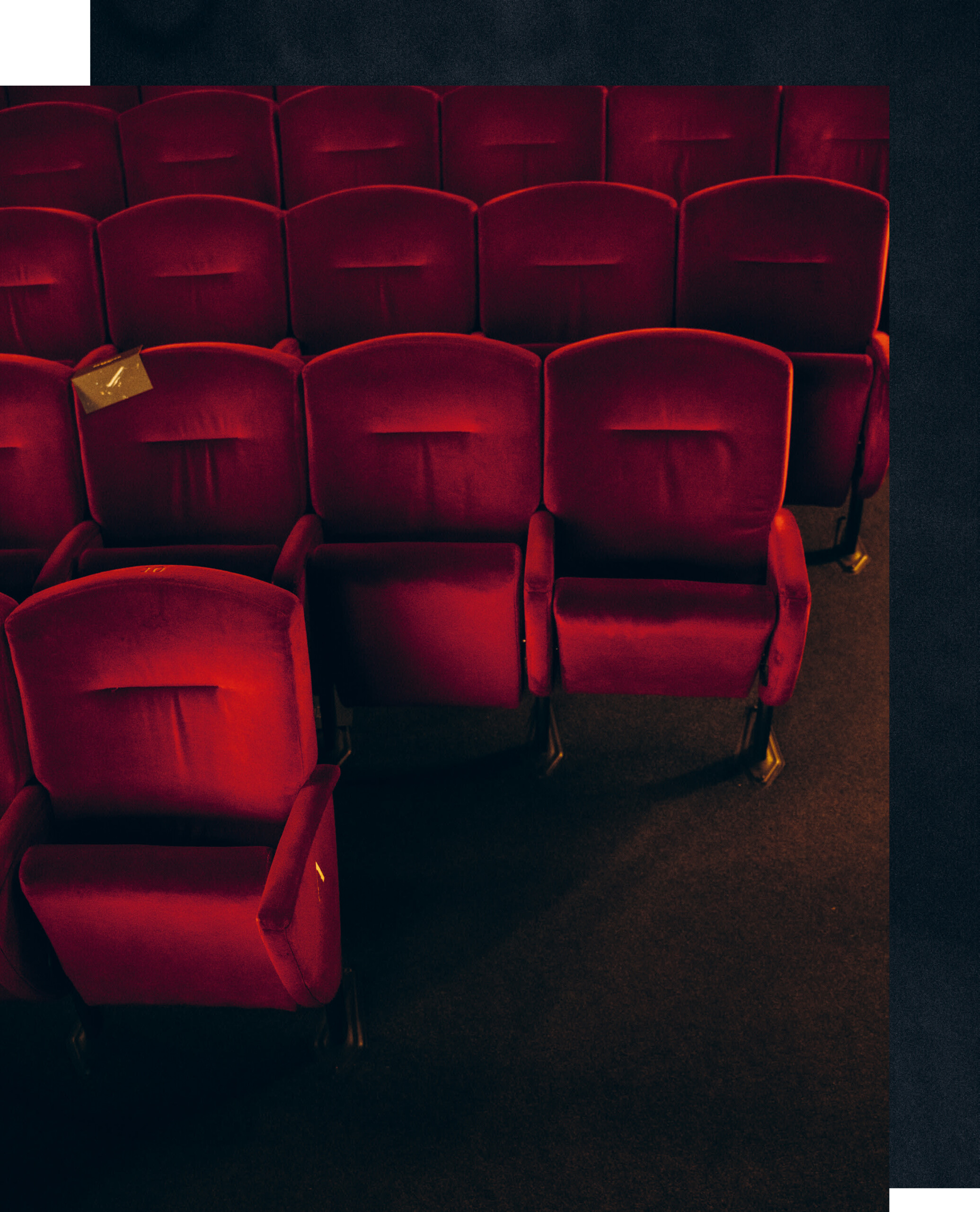MATERIALS
IN FLUX
Formafantasma
Prada Frames, Materials in Flux
A symposium curated by Formafantasma
Spring is a busy season for the design industry. A time buzzing with anticipation of the Salone del Mobile in Milan, when all the big names on the design scene crowd the exhibition centre and spill over into the entire city. This year, things finally seem to have returned to normal. It’s possible to set off for the event in person–no more virtual encounters, but solid physical reality. A cross between a business meeting, a class reunion and a spring awakening. Of course, Formafantasma has a firm place at the heart of the happening.


Although Andrea und Simone are rushing to complete their preparations for Milan as well as other projects, they manage to carve some time out of their diary to talk to me about Prada Frames. Materials in Flux. Organised by Prada and curated by the two designers, the three-day symposium is taking place in Milan this year for the second time. Over the Easter weekend, we meet up online from one hotel room to another–me in Bad Gastein in the Austrian Alps, them in Rome. They are relaxing after a packed day, sitting side by side on their hotel bed and chatting to me like a well-practised, yet still very open couple, fluently completing each other’s sentences and alternating in taking the lead. They seem to more than agree in all their responses. In the background, the sun slowly sets in the evening sky, in Austria and Italy alike.


Last year you curated Prada Frames. On Forest as a multidisciplinary symposium in parallel to Milan’s Salone del Mobile. The second edition of Prada Frames this year, also held during the design week, has the theme of Materials in Flux and examines the concept of waste as matter in transformation. One aim of the symposium will be to unpack the complex relationship between matter and ecosystems. Can you explain what you mean by that?
S
F
We always wanted to address subjects that we feel are relevant for the design community at large, but also beyond that. This year, we actually initially wanted to talk about waste, a subject which is widely discussed and covered. When we think about design production specifically, it often involves minimising waste or producing solutions that could reuse materials in very different ways. On the other side, when we basically started reflecting on the word waste, we realized that at the end of the day it’s a very simplistic way of defining what has value and what doesn’t. In this respect, we felt that it was almost closer to an economic description of something—which of course it isn’t, but if you associate it specifically with materials, it is. And in fact, when you think about materials in flux as matter, it is in a constant state of evolution, even geologically; look at a piece of marble or stone, and you very often find it’s the coexistence of vegetable matter, organic matter of any kind of different species that became mineral in the process of evolution.
So in this respect, when we talk about Materials in Flux, it is a way of abstracting this idea of waste and looking at the reality of materiality, which is full of constant potentials that could migrate, transform and always essentially become the ecosystem which is in a constant process of evolving. That’s why we thought this is the most relevant way of addressing materiality. You could also see it as a very officious point of departure, but at the end of the day we believe the role of this symposium is—hopefully—to offer clarity without mere simplification; to accept complexity, but also to offer clarity through the contributions of very different practitioners who can give insights that possibly, or sometimes, or very often, are not really required of the design conversation.
-
-
-
-
Your programme is very detailed and very well curated. It almost feels like a highly orchestrated composition. The symposium is divided into six sessions, two per day, which each somehow relate to a design-thinking process such as conceptualising, contextualising, designing, evaluating, governing and re-inhabiting. How do you bring all this together? How do you interweave sessions and speakers?
A
T
For us, it was important to think about the symposium as a multitude of voices. They are speaking differently, and they are approaching the same topic in different ways, but hopefully at the end they will come together to make a point. Of course it’s important for this symposium to attract a physical audience, but for us it’s also very important for the proceedings to be recorded so that at the end of the three days, we can bring together all these different voices.
S
F
I’d also say here that for us, it is extremely important that this symposium is not a celebration of brilliant figures in the design scene. In a way, it’s much more than that. We’re not seeking to invite a bunch of very cool people from design or architecture. We’re actually trying to do something extremely curated that will yield a transcript at the end of the three days, building a dense compendium of knowledge that can be made available to others.
In a way, it’s exactly the same as a publication presenting different authorial voices, where curation of those voices will hopefully create some sort of pattern in the end. It is about collecting these different perspectives into an overview of a complex subject, which could continue to be investigated for years afterwards.
-
-
-
-
How did you decide on the different participants?
S
F
Essentially, what we wanted was a historical perspective, an anthropological perspective, practice-based solutions, people that engage in constructive criticism in design and architecture, and scientists. We also have scientists that work with matter on a really chemical level, for instance.
We will also have contributions talking about architectures of waste, because we think that it is also extremely relevant. For example, we may communicate very clearly about something we talk about on a daily basis—a landfill site, say—but we often don’t really know how it’s constructed or managed. So we also wanted to address very practical things alongside others that are much more expansive, and sometimes maybe even metaphysical.
-
-
-
-
Materials in Flux also means for you that there is actually no such thing as waste, because waste is also material or matter and part of a complex ecosystem. If we embrace this point of view, we can deal with waste or matter in a completely different way and find new solutions for it. Can you give some concrete examples of how you foster this attitude in the symposium?
S
F
We wanted to bring in some practitioners that are extremely clear in their practice and also transformative, so that you immediately understand that they provide solutions. With this in mind, we invited Bas van Abel, the founder of Fairphone. Their concept of an objective which can be updated and which doesn’t use conflict minerals clearly offers a solution.
We also have Lara Gilmore, the partner in crime of Massimo Bottura, who is one of the most creative chefs anywhere in the world. Together, they run the Osteria Francescana restaurant in Modena, Italy. But interestingly enough, we invited her not because of that, but because she founded a non-profit organisation called Food for Soul. It sets up canteens for homeless people around the world serving superb food cooked by international chefs, and all created using waste food. We wanted to bring in this perspective because for us, it’s not about celebrating high-end food, but about showing how you can explore aspects in any profession or environment which can then be applied for the benefit of society. The work of Lara Gilmore and her husband is a good example of that.
And then we definitely wanted contributions from many different anthropologists, because we think anthropology is an extremely interesting discipline at this moment. For example, we invited Eduardo Kohn to talk about his book, How Forests Think.
He addresses anthropology from a completely different stance by adopting the perspective of the forest. His contribution is valuable for us because he helps us to look at the world from the perspective of other species, which is also an interesting way of addressing materiality. We often take a very anthropocentric perspective, and it’s important for us to show that there are other alternatives.
A
T
Then we have Anna Anguissola, an archaeologist who will talk about the stream of waste in Pompeii. It’s fascinating to go back in time and to see how people regarded waste in the past and how the city dealt with it. And then of course, we have Fiona Raby and Anthony Dunne, and Paola Antonelli and Alice Rawsthorn, who will hold a design emergency session and naturally speak about design. But in this session, we also invited students from the Design Academy Eindhoven, from ECAL and GSAPP Columbia and more. We want to see how a younger generation is approaching the topic.
-
-
-
-
Your curation of the symposium seems very comprehensive. Did you have to leave anything out? What would you do differently next time?
S
F
We actually wanted to have economists, but we couldn’t manage that; first and foremost because the best economists are insanely expensive. Nevertheless, we really wanted an economist because we think it is really relevant to have somebody who addresses the topic from an economic perspective. Of course, we weren’t interested in a traditional economic viewpoint, but wanted somebody who takes a critical stance on capitalism and puts forward alternative economic ideas. It’s extremely relevant for economists to extensively investigate that direction. We very much regret not managing that, but we hope to include that perspective at a later Prada Frames edition.
Please select an offer and read the Complete Article Issue No 14 Subscriptions
Already Customer? Please login.
